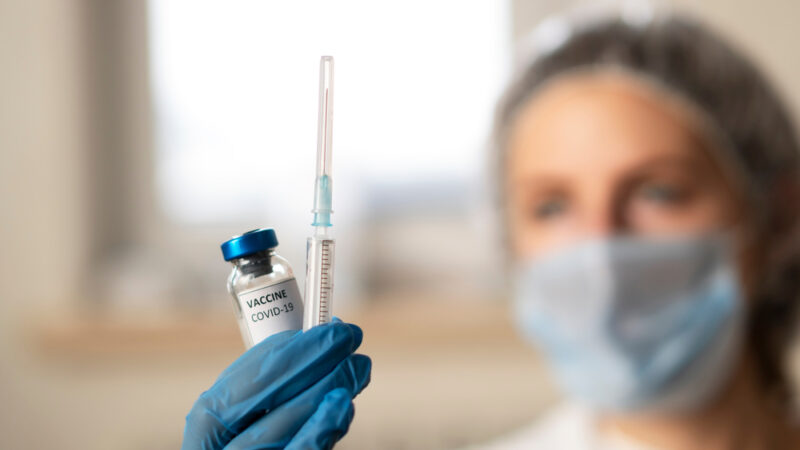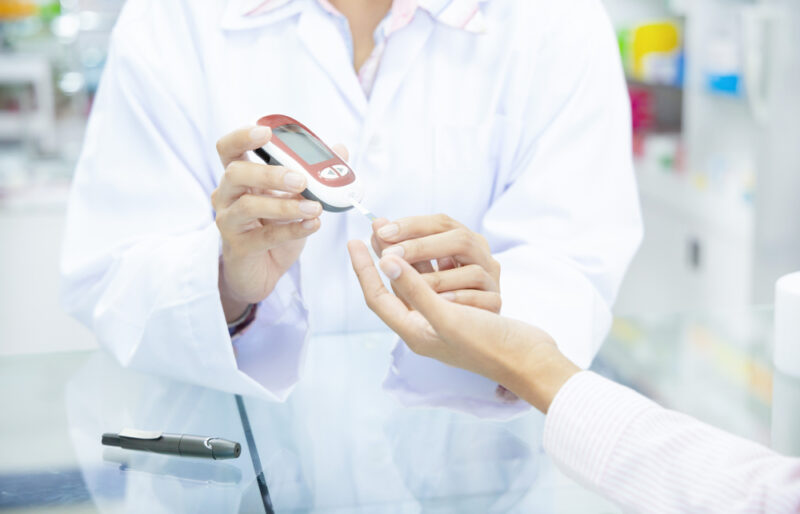Inside: How to ensure your pharmacy is financially healthy — and how to keep it that way
In small business, surviving is not thriving, and you need to take a good long look at your finances to recognize bad practices that may be hurting you. As you build healthy financial habits and stay tuned in to the key ratios that indicate financial sore spots, you’ll become more aware of your pharmacy’s finances and set your self up for success in the future.
Characteristics of Financially Healthy Companies
Profitable companies make responsible, informed decisions about their finances. These are the traits your pharmacy should have to stay financially healthy and create profit in the long run.
Pay the bills
A healthy business is able to meet its financial commitments. That means paying your vendors on time, meeting your loan obligations, making payroll, and paying your taxes in full. If you are frequently falling behind on payments and getting hit with late fees, that’s a good sign that something’s not right.
You should be able to pay without risking overdraft fees, and if you have a tax judgment against you, that’s another red flag.
Master cash flow
Cash flow can make or break a business, and smart pharmacy owners will have a good handle on theirs. This means making sure that your money isn’t tied up in situations where you can’t get to it, like in uncollected receivables or unnecessary inventory. These practices can help:
- Collect receivables ASAP
- Choose a POS vendor with quick cash conversion
- Improve inventory management
- Minimize payroll
- Switch to accounting on a cash basis
Pharmacy owners should plan for variability in their cash flow by opening up a line of credit when business is good so they have reliable access to low-cost, short-term credit in a pinch. If owners only think about opening a line of credit when business is declining, they may find they aren’t eligible for one.
Have a cash cushion
Keeping a robust cash reserve is crucial to managing the ebb and flow of income. That way, you can make payroll or pay for inventory even if third party payors don’t pay you on time. Use this formula to determine the minimum cushion you should have saved:
Cash Cushion = (2 Weeks of Wholesale Bills + 2 Weeks of Payroll) / 2
If you run too lean and sacrifice your cash cushion, not only do you risk not being able to pay for inventory and payroll, you won’t be able to focus on bigger picture issues, like growing your business.
Editor’s picks
The Best (and Only) Way to Maximize Wholesaler Rebates
How to Make Immunizations a Pharmacy Profit Center
Is Owning a Pharmacy Profitable?
Plan for emergencies
Sometimes, accidents happen: a natural disaster damages your building, your delivery driver gets in an accident, a pharmacist or technician makes a medication error.
For those situations, a financially healthy pharmacy will be covered by proper insurance and not have to take the hit directly. Make sure you’re fully covered with the following insurance policies in your pharmacy:
- Property and casualty
- General liability
- Professional liability
- Workers’ compensation
- Commercial auto
- Umbrella
- Cyber Liability
- Employment practice liability
Since independent pharmacy has unique risks associated with it, be sure that the insurance coverage you select doesn’t exclude important parts of the profession like consulting, diagnostic, or referral services.
Keep track of the money
A handwritten ledger isn’t going to cut it to stay on top of a pharmacy’s finances. Your pharmacy should have a financial management system that keeps track of all the business’s financial goings-on. Regularly update your balance sheet, profit and loss statement, and cash flow statement so you can make informed decisions about your business.
You should review these statements regularly to make it easier to notice if anything is amiss, and business accounts should be separated from any personal accounts you may have.
Formulas to Know
There’s no single measurement that will prove your business is financially healthy, but there are a few formulas that when used together can give a good overall picture of how your pharmacy is performing. These are the ratios you need to know.
Quick ratio
The quick ratio, sometimes known as an acid test, is a measure of your pharmacy’s liquidity. Here’s how you calculate the quick ratio:
Quick Ratio = (Current Assets – Inventory – Prepaid Expenses) / Current Liabilities
The numerator of the formula estimates your liquid assets — the assets you could convert to cash if you need to quickly cover your liabilities. A healthy company will typically have a quick ratio of at least 1. With a quick ratio lower than 1, it signals that the business might have challenges paying its debt, while a quick ratio greater than 1 means they are well equipped to handle their current liabilities.
Current ratio
The current ratio is another measure of liquidity, and its formula looks similar to the quick ratio:
Current Ratio = Current Assets / Current Liabilities
The current ratio gives businesses a little more leeway than the quick ratio by not excluding less liquid assets like inventory. It demonstrates how you could maximize your assets to cover liabilities, and like the quick ratio, your pharmacy should have a current ratio of over 1.
Debt to equity ratio
Sometimes known as the risk ratio, the debt-to-equity ratio measures how your pharmacy is leveraged. Here’s how it’s calculated:
Debt-to-Equity Ratio = Total Liabilities / Shareholder Equity
The ratio gives a quick picture of how you are using debt. Pharmacies with a high debt-to-equity ratio are primarily using debt to finance, and that could signal to financial institutions that the business is high risk.
However, debt by itself isn’t necessarily a red flag, so this formula should be used in conjunction with one of the liquidity ratios above to determine whether your pharmacy’s level of borrowing is healthy.
Gross profit margin
Gross profit margin is the percentage of every dollar that’s available to cover fixed costs, operating expenses, and taxes.
This metric is used as a measure of your pharmacy’s financial health. If your gross margin rate is too low, it means you won’t have enough money to pay for operating expenses. If it’s high, it means your pharmacy will not only be able to keep the business running but also invest in new opportunities to grow the business and to take some extra money home.
How to calculate gross profit margin:
Gross Profit Margin Rate = (Total Sales – Cost of Goods Sold) ÷ Total Sales
By subtracting your cost of goods sold from total sales, the number you get is a dollar figure that equals your gross profit. When you divide that gross profit by total sales, you will find your gross profit margin rate.
Operating profit margin
Also known as return on sales, the operating profit margin can indicate how well your pharmacy is being financially managed. It’s calculated with this formula:
Operating Profit Margin = Operating Earnings / Revenue
Operating earnings is calculated by subtracting the cost of goods sold and operating expenses from total revenue.
The result shows if your pharmacy is generating enough income from its regular services to cover expenses outside your operating costs, like paying interest on your debt. If this margin fluctuates a lot over time, it means that your business might be a risky bet for financial institutions, but if it increases steadily over time, it shows that you have become more profitable.
Forecasting Financial Health
Building good financial habits and knowing where you stand with key financial ratios is an important foundation for long-term success, but you can take additional steps to forecast your pharmacy’s financial health into the future.
Know your goals
In order to measure the success or failure of your pharmacy’s financial health in the future, you need to set goals. Sit down with your current financial statements and decide where you can improve, and where you most want to improve.
If your quick ratio is currently less than 1, you may decide to work on reducing your liabilities and increasing your assets. Or, you may see that your cash cushion isn’t quite where it needs to be and decide to save more aggressively.
Your goals should be SMART — Specific, Measurable, Achievable, Relevant, and Timely — to help you determine whether you’re actually making changes that will positively impact your financial health.
Create projections
To make your goals into a reality, hold yourself accountable with pro forma financial statements. These statements are projections about your pharmacy’s future based on past performance. In a pro forma income statement, you’ll make a projection about sales and expenses to determine your future profits. Then, you’ll create a budget for the future and use that, along with your pro forma income statement, to create a pro forma balance sheet that shows how the pharmacy’s assets and liabilities will change over time.
Though these documents won’t be 100 percent accurate, they will give you an idea if your pharmacy is meeting the expectations you started out with.
An Independently Owned Organization Serving Independent Pharmacies
PBA Health is dedicated to helping independent pharmacies reach their full potential on the buy side of their business. The company is a member-owned organization that serves independent pharmacies with group purchasing services, expert contract negotiations, proprietary purchasing tools, distribution services, and more.
PBA Health, an HDA member, operates its own NABP-accredited (formerly VAWD) warehouse with more than 6,000 SKUs, including brands, generics, narcotics CII-CV, cold-storage products, and over-the-counter (OTC) products.
Want more pharmacy business tips and advice? Sign up for our e-newsletter.















